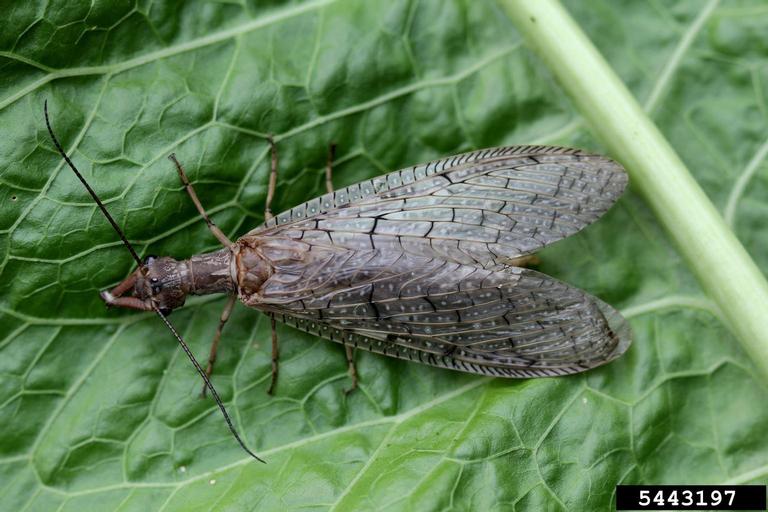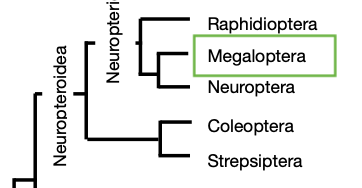32 Orders of Insects: Megaloptera


Order Megaloptera: alderflies and dobsonflies, fishflies
Megaloptera
- common name: alderflies, dobsonflies
- from Greek, ‘megas’ = large, ‘ptera’ = wing
- most diverse in temperate regions; about 300 species worldwide; 26 Australian spp.
- Australian species found in headwaters of streams along Great Dividing Range in eastern Australia; associated with cool, clear waters, usually found where submerged detritus collects; one sp. in SW Australia
- Larvae are aquatic; live under rocks and debris and are active predators, feeding on small aquatic invertebrates; pupate in soil adjacent to stream
- adults tend to be short-lived, do not appear to feed, found on vegetation surrounding larval habitat
- large mandibles in males are for courtship displays,
- adults crepuscular or nocturnal, attracted to lights

Characteristics of Megaloptera
Adults
- Medium to large (20-100mm)
- compound eyes large and separated; antennae filiform, tapering at the end
- Prognathous, mandibulate mouthparts
- prothorax longer than meso- and metathorax
- Membranous fore and hind wings with cross veins along the edge & often with dark spots; wings held roof-like over the body at rest
Immatures
- Immature stages (larvae) aquatic, prognathous, with stout mandibles, jointed legs only on thorax, with lateral abdominal gills
More information: CSIRO Megaloptera page, and Australian Freshwater Invertebrates.
Topic Review
Do you know…?
- the main anatomical features
- how to distinguish Megaloptera larvae from other aquatic larvae

